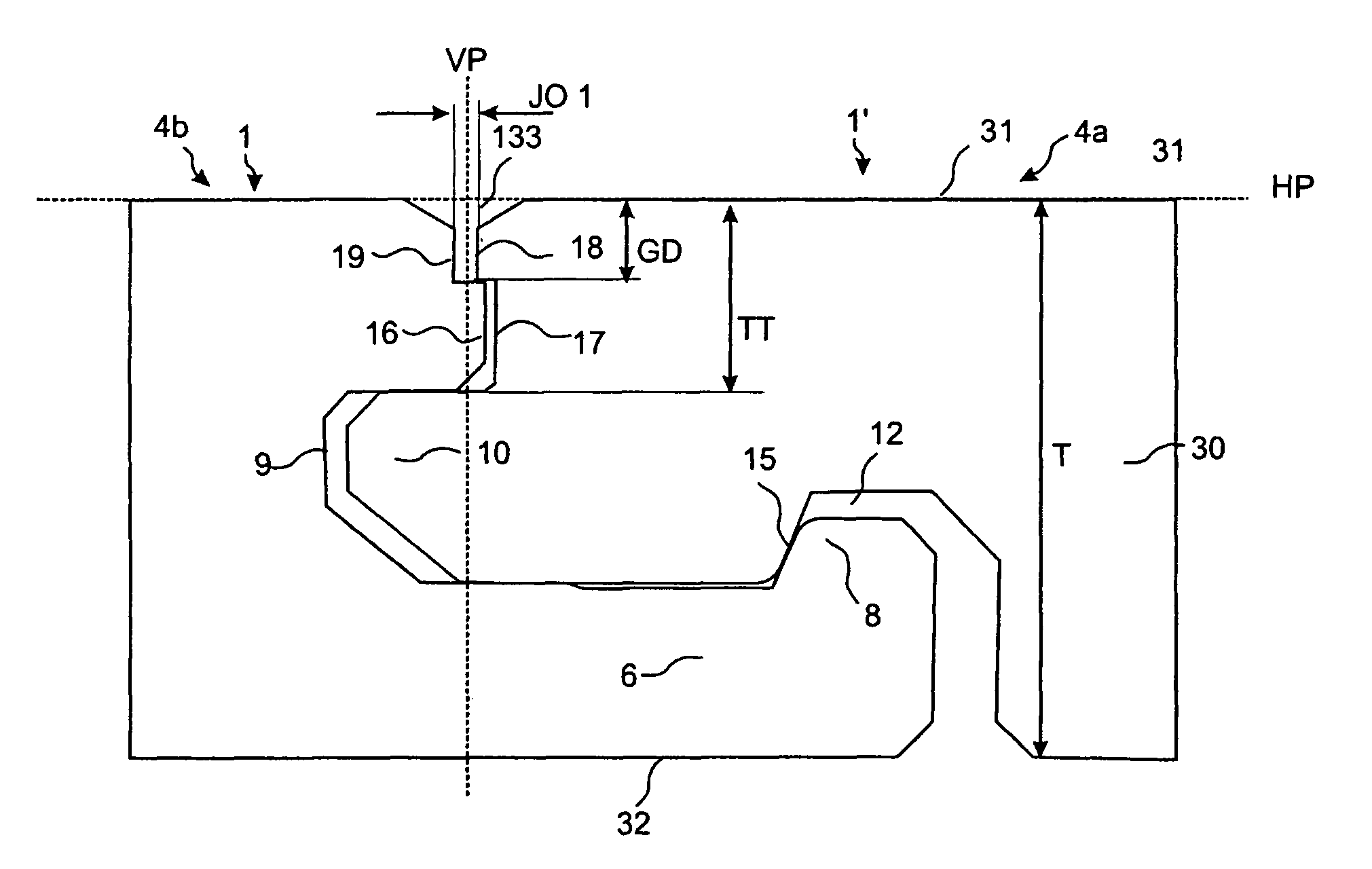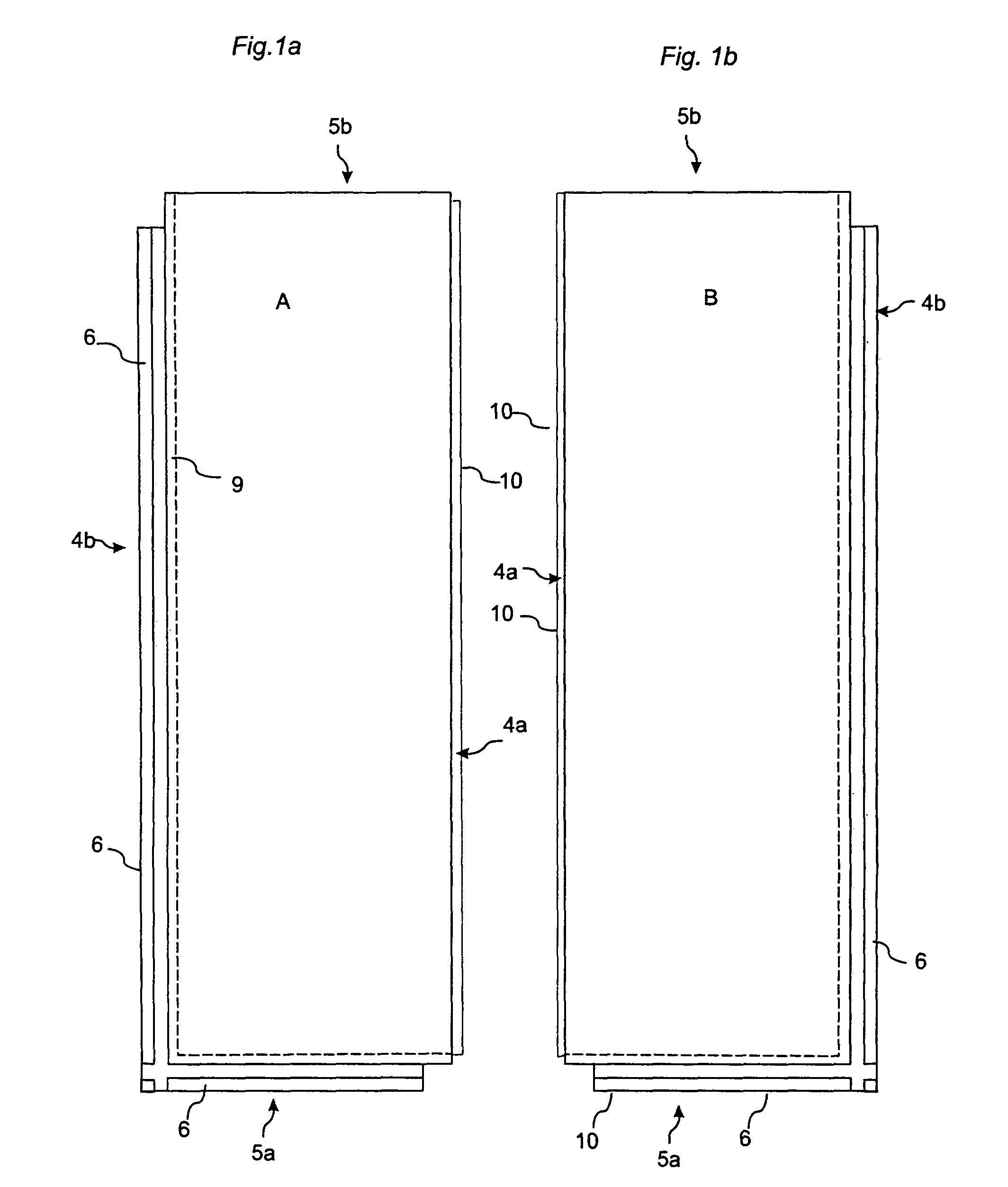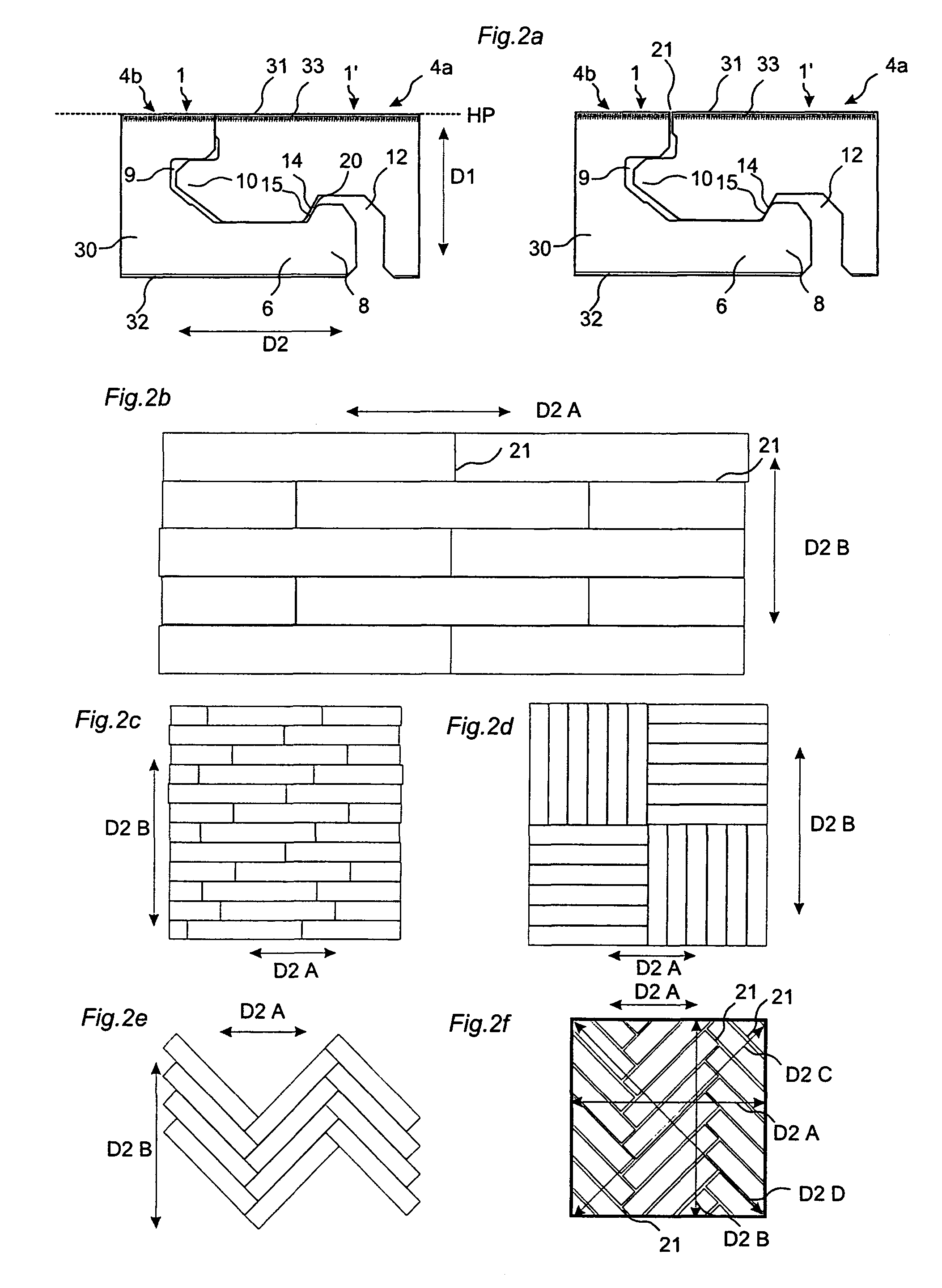Floor covering and locking systems
a technology for locking systems and floor coverings, applied in the direction of resiliently mounted floors, walls, constructions, etc., can solve the problems of large load on the locking system, limited continuity floor surface, and particularly large load in passages between different rooms, and achieve the effect of better precision
- Summary
- Abstract
- Description
- Claims
- Application Information
AI Technical Summary
Benefits of technology
Problems solved by technology
Method used
Image
Examples
Embodiment Construction
[0049]FIGS. 1a and 1b illustrate floorboards which are of a first type A and a second type B according to the invention and whose long sides 4a and 4b in this embodiment have a length which is 3 times the length of the short sides 5a, 5b. The long sides 4a, 4b of the floorboards have vertical and horizontal connectors, and the short sides 5a, 5b of the floorboards have horizontal connectors. In this embodiment, the two types are identical except that the location of the locks is mirror-inverted. The locks allow joining of long side 4a to long side 4b by at least inward angling and long side 4a to short side 5a by inward angling, and also short side 5b to long side 4b by a vertical motion. Joining of both long sides 4a, 4b and short sides 5a, 5b in a herringbone pattern or in parallel rows can in this embodiment take place merely by an angular motion along the long sides 4a, 4b. The long sides 4a, 4b of the floorboards have connectors, which in this embodiment comprising a strip 6, a...
PUM
 Login to View More
Login to View More Abstract
Description
Claims
Application Information
 Login to View More
Login to View More - R&D
- Intellectual Property
- Life Sciences
- Materials
- Tech Scout
- Unparalleled Data Quality
- Higher Quality Content
- 60% Fewer Hallucinations
Browse by: Latest US Patents, China's latest patents, Technical Efficacy Thesaurus, Application Domain, Technology Topic, Popular Technical Reports.
© 2025 PatSnap. All rights reserved.Legal|Privacy policy|Modern Slavery Act Transparency Statement|Sitemap|About US| Contact US: help@patsnap.com



